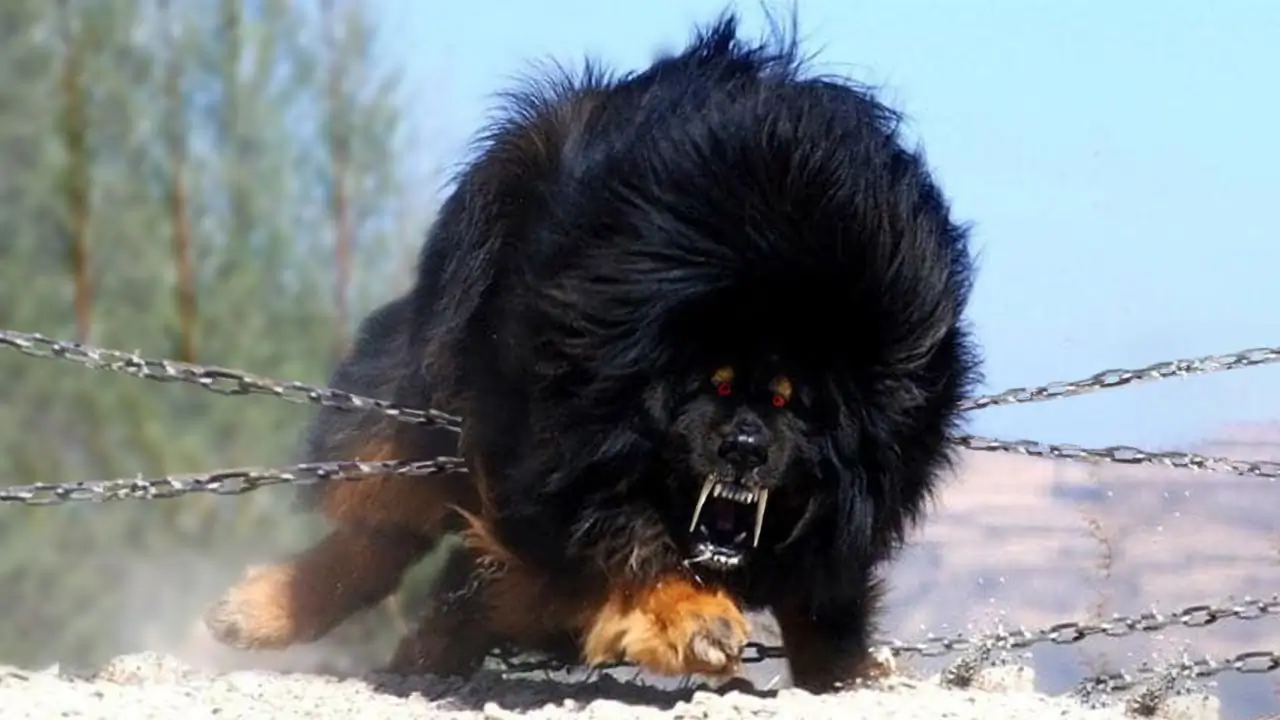Dog Breeds Commonly Banned by Home Insurance Companies

Aside from natural disasters and water damage, the three things that most concern home insurance companies are dogs, pools, and trampolines. Essentially, anything fun.
The issue with dogs is the costly liability claims against their owners. Homeowners insurance covers dog bites and other dog-related injuries—such as falls when a dog jumps on someone or runs at them. According to the Insurance Information Institute, the average dog bite claim is around $44,760.
To control costs, leading home insurance companies have lists of banned dog breeds—situations where the insurer won’t provide coverage if a customer owns the breed. However, not all home insurers have strict lists of banned dog breeds. Some assess dog bite issues on a case-by-case basis to determine whether to offer insurance to the owner.
We analyzed banned dog breed lists from 42 homeowners insurance companies nationwide to identify the most frequently banned breeds. These lists are often hidden from consumers in filings made by insurers to state insurance departments.
Dog Breeds Most Often Banned by Home Insurance Companies

| Breed | % Of Banned Lists With Breed |
|---|---|
| Doberman Pinscher | 100% |
| Pit bull | 100% |
| Rottweiler | 100% |
| Chow Chow | 95% |
| Wolf dogs and wolf hybrids | 93% |
| Presa Canario (Canary dog) | 86% |
| Akita | 79% |
| German Shepherd | 45% |
| Husky | 38% |
| Mastiff | 29% |
| Alaskan Malamute | 26% |
| Bullmastiff | 24% |
| Caucasian Shepherd | 24% |
| American Bulldog | 19% |
| Cane Corso | 19% |
| Great Dane | 17% |
| Malamute | 14% |
| Giant Schnauzer | 12% |
| Boxer | 10% |
These percentages indicate how frequently each breed appears on banned dog breed lists maintained by various home insurance companies.
Pit bulls, as defined by insurance companies, typically include Bull Terriers, Staffordshire Bull Terriers, American Bull Terriers, and American Staffordshire Terriers, or any combination of these breeds.
Other commonly banned dogs include:

- Mixed breeds of the aforementioned dogs
- Guard dogs
- Dogs with a history of biting people or animals
- Dogs with a history of attacking people or animals with significant force
- Any dog exhibiting aggressive behavior as observed by an insurance company representative
The Debate Over Banned Dog Breeds Not all home insurance companies maintain official lists of restricted dog breeds. Many decide whether to insure households with potentially problematic dogs on a case-by-case basis.
Among insurers that do have banned breed lists, these lists can typically be found in filings submitted by home insurance companies to state insurance departments. These lists compile breeds perceived as dangerous due to their propensity to scare people, bite, or cause accidents.
Home insurers’ lists of “banned breeds” are extensive and encompass expected breeds like Rottweilers, as well as some surprising entries like German Shepherds and less common breeds such as Alaskan Malamutes. Pit bulls of all variations often top these lists.
In the filings of many major insurers, it explicitly states that coverage will not be extended to households where these dogs reside. Policies may also not be renewed if a “vicious dog” is discovered living in the insured property.
Advocates for dogs, including the Animal Defense League, American Kennel Club, Best Friends Animal Society, and Humane Society, are actively challenging these practices. They argue that it is unfair for home insurance companies to discriminate against dogs based solely on their breed. In a plea to the National Association of Insurance Commissioners (NAIC), these groups pose a broader question: Does discriminating against the dog breed also equate to discriminating against the owner?
According to these advocates, the use of breed-specific lists negatively impacts three groups—uninformed consumers who may not realize their dog choice affects their insurance options, people of color with a strong association to certain breeds like pit bulls, and consumers with limited financial resources who face higher insurance costs or exclusions due to their dog breed.
The dog advocate groups are urging a moratorium on “banned breed lists.” A spokesperson from NAIC confirmed that this request would be evaluated during the organization’s spring 2021 meeting.
Dog Bite Insurance Claims

Home insurance companies defend their lists of banned dog breeds.
“Each year, there are a significant number of severe injuries and fatal attacks on humans by certain dog breeds,” states Karen Collins, vice president of the American Property Casualty Insurance Association (APCIA), an industry lobbying group. “Children make up half of the dog bite victims.”
The number of dog bite claims varies annually; there were 18,522 claims in 2017, according to the Insurance Information Institute. In 2020, dog bite claims decreased to 16,991, with an average cost per claim of $50,245.
Collins mentions that settling these claims costs nearly $800 million. Dog advocates argue this is a small fraction of insurers’ liability losses, less than 2%.
However, insurers are concerned about the rising trend in dog bites. Collins notes that medical costs for reconstructive surgery and legal expenses for court proceedings rose by approximately 15% in a single year.
Sophia Buchan from Aberdeen Township, New Jersey, was walking with her young children and black Labrador retriever when a pit bull emerged from an unfenced yard and lunged at her son. Her dog intervened and almost lost a leg. Although the owner called the dog off, he never came out of his house.
Buchan subsequently sued to recover $8,100 in veterinary bills. When Buchan filed a police report, she learned that the owner was known to police for raising aggressive animals. Despite her experience, Buchan harbors no animosity toward pit bulls. “I see them at the vet, and they’re perfectly fine,” she said.
“He still hasn’t put up a fence,” she added.
BSL: Breed-Specific Legislation

Insurance companies aren’t the only entities practicing dog breed discrimination. States, cities, and local municipalities have their own lists, often inconsistent with one another. This practice is called Breed-Specific Legislation (BSL).
BSL began in the 1980s after several fatal dog attacks, according to PetPlace, an informational website. These laws equate certain breeds with dangerous qualities and ban or restrict them based on group characteristics rather than individual behavior.
Learn more : Pets breeds That Are Difficult to Insure 2024
“These laws do not make exceptions for therapy dogs, service dogs, or search and rescue dogs,” notes PetPlace.
“Deliberately Mislabeled”
Dog advocates challenge the evidence supporting BSL, including an aging study by the Centers for Disease Control (CDC) examining dog bites from 1979 to 2003. They argue the study was flawed due to random data collection methods, often relying on newspaper reports that did not always identify the breed of the dog, if it was mentioned at all.
“One study indicates that some dog breeds are deliberately mislabeled to increase adoption potential,” according to the advocates.
Despite these challenges, many insurers maintain their position on coverage bans, particularly for larger dogs and pit bulls. “Certain breeds can inflict bites with a force averaging 1,000 pounds per square inch,” explains APCIA’s Collins. “This is enough to cause severe injury to a child or adult within seconds. Therefore, we oppose any efforts that would require insurers to wait until a potentially devastating personal injury claim before deciding on coverage.”
Insurers have conducted their own studies identifying which breeds cause the most harm, justifying the exclusion of specific breeds, notes Loretta Worters from the Insurance Information Institute, which compiles data on dog bites.
“Insurers do not discriminate against people of color or individuals with limited means,” Worters emphasizes. She asserts that banned dog breed lists are based on actual insurance claims.
State Farm Takes a Different Approach
Not all insurers maintain lists of banned dog breeds.
- “State Farm does not inquire about the breed or type of dog when issuing policies,” says Heather Paul, a spokesperson for the largest home insurer in the nation, who owns two pit bulls herself.
Instead, State Farm evaluates the dog’s history. “Any dog, regardless of breed, can bite, and most bites result from a combination of circumstances and situations,” Paul explains. “People often put themselves and others at risk, unfairly blaming dogs. This is why State Farm focuses on educating about dog bite prevention rather than imposing breed restrictions.”
The Plight of Pit Bulls

One thing remains clear: state and local laws, along with home insurers’ restrictions, disproportionately impact pit bulls, the most frequently banned breed. The refusal of insurers to underwrite policies for families with these dogs, coupled with discriminatory BSL laws, often leads to their abandonment or surrender to shelters, according to a study by dog advocates.
In California, the nation’s most populous state, Insurance Commissioner Ricardo Lara notes there is already a significant problem with animal overpopulation and homelessness. There is concern about the fate of thousands of new “pandemic pets” once the pandemic subsides.
Joe Mihalyi, a resident of Hamilton, New Jersey, whose son owns a pit bull, visited several dog shelters in search of a pet and was struck by what he saw. “Nine out of ten dogs we saw in the cages were pit bulls,” he recalls. “They had scars on their faces and marks all over their bodies.”
“You could sense their desire for love, and we wanted to adopt one,” says Mihalyi. “However, we couldn’t take the risk, not knowing what they had been through.”
According to the ASPCA, more than a million and a half dogs and cats are euthanized each year, with pit bulls accounting for about 400,000 of them. The Best Friends Animal Society provides community-level data on animal shelters’ success in saving dogs and cats.
Practical Advice for Dog Owners

While some insurers ban certain dog breeds, others provide flexibility for pets already in the household. According to dog advocacy groups, some insurers overlook breed issues for wealthy clients who provide significant business. State Farm allows all dogs unless they have a “bite history.”
Collins of APCIA advises contacting your home insurer before bringing a dog home. If your dog choice results in a loss of coverage, “You can shop around for a different insurer or consider a different breed,” she suggests.
Both homeowners and renters insurance policies typically cover legal expenses resulting from dog bites, with liability coverage typically ranging from $100,000 to $300,000, according to Worters at the Insurance Information Institute. Additionally, she recommends purchasing a personal umbrella insurance policy, which provides an additional $1 million or more in protection, particularly in today’s litigious environment.
PetPlace offers a state-by-state guide to laws prohibiting the exclusion of entire breeds. For instance, Vermont “does not permit the exclusion of entire breeds of dogs.” Several other states have enacted similar laws, mandating that home insurers comply with state regulations.
If your pet inflicts a serious bite, contact animal control and notify your insurer. “Obtain your dog’s medical records from your veterinarian,” advises State Farm’s Paul. “Ensure you have proof of rabies vaccination.” A bite incident does not necessarily mean your homeowners insurance policy will not be renewed, but an investigation will likely follow.
Obtaining the American Kennel Club’s Canine Good Citizen certification may also strengthen your case for maintaining proper insurance coverage for yourself and your dog.
Faq about Breed-Specific Legislation (BSL):

- What breeds are commonly affected by BSL? BSL often targets pit bulls, Rottweilers, and Doberman pinschers, among others.
- Why do some cities implement BSL? Advocates argue that it enhances public safety, while opponents believe it unfairly stigmatizes certain breeds.
- Is there evidence that BSL reduces dog attacks? Studies show mixed results, with some suggesting no significant impact on safety.
- How can I advocate against BSL? Join local or national organizations that promote responsible dog ownership and educate policymakers.
- What alternatives exist to BSL? Many experts recommend breed-neutral laws focusing on individual dog behavior.
- What happens if my dog is deemed a restricted breed? Depending on the area, you may face fines, restrictions, or even forced rehoming.
- Are there success stories of cities repealing BSL? Yes, some places have replaced BSL with more effective, breed-neutral regulations.
- What role does public perception play in BSL? Fear and misinformation often drive BSL decisions.
- How can I keep my dog safe from BSL? Stay informed about local laws, train your dog well, and be a responsible owner.
- What’s the global perspective on BSL? Some countries have banned BSL altogether, recognizing its limitations.




One Comment